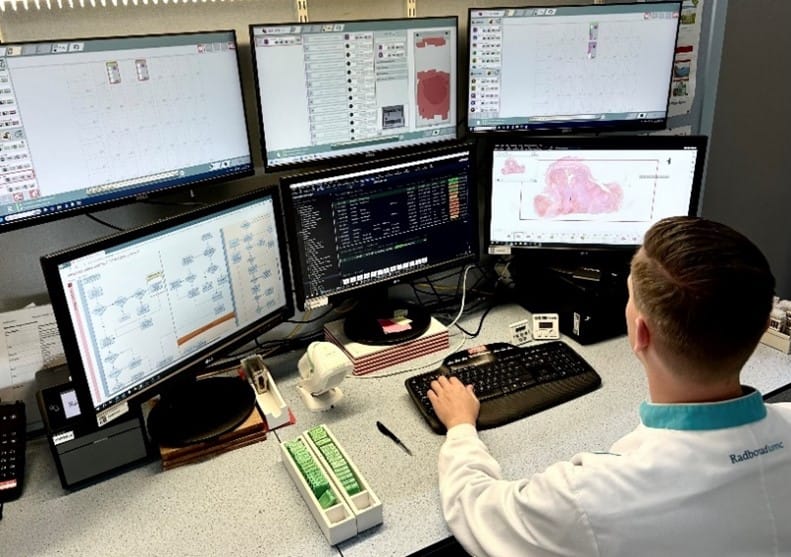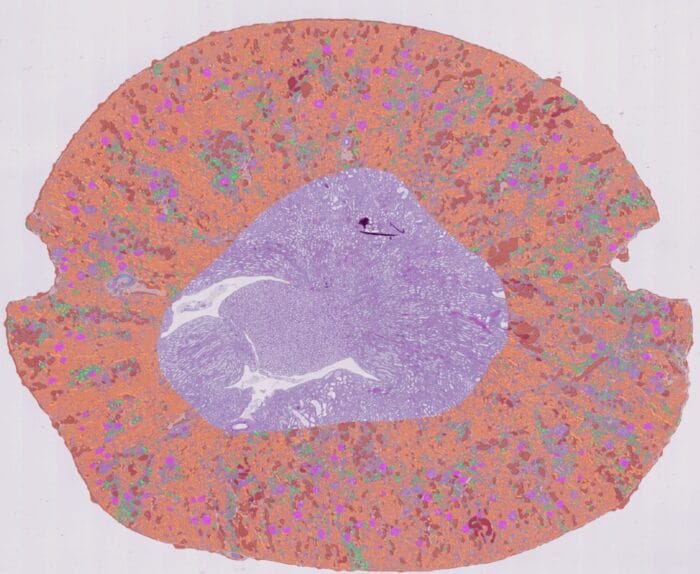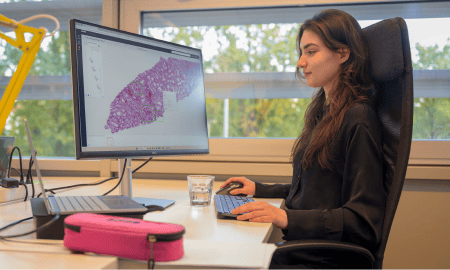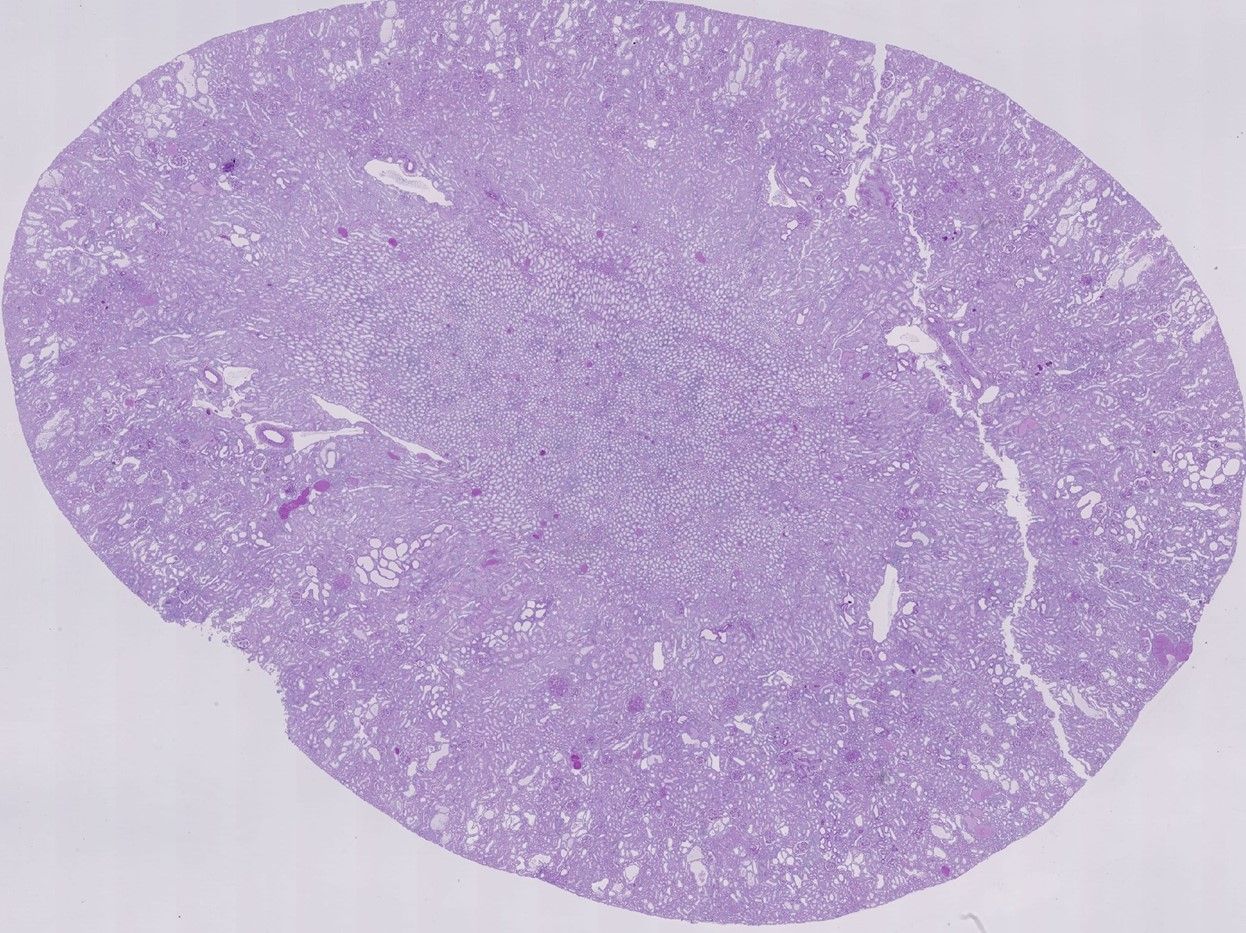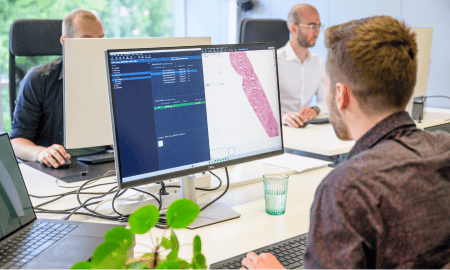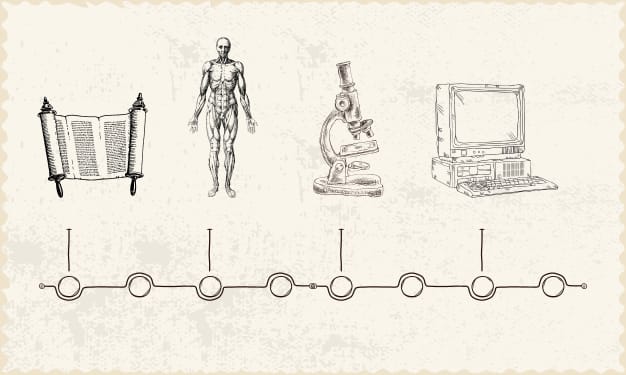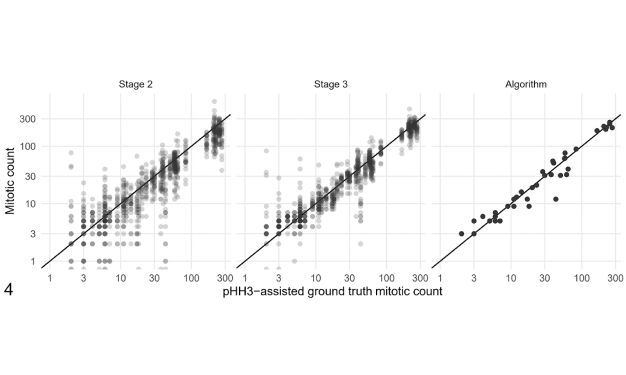The rise in popularity of AI in pathology
The recent advancements in artificial intelligence (AI) have ignited excitement regarding its potential applications in the field of pathology. Evidence is accumulating that AI can make diagnoses more accurate, efficient, and standardized. However, industry professionals find themselves wondering: Is this rise of interest in AI merely a momentary hype, or will AI change the landscape of pathology practice?
Growing number of studies about AI in the medical field
The anticipation surrounding its capability have consistently grown, as demonstrated by the increasing volume of medical AI publications (escalating from a mere 203 articles in 2005 to an impressive 12,563 in 2019).1
Being a field rich in images, pathology stands out as the discipline with the highest number of AI research papers (Figure 1) among 17 fields engaged in medical AI research.

Source: Figure. 1 retrieved from Meskó, B., Görög, M. A short guide for medical professionals in the era of artificial intelligence. npj Digit. Med. 3, 126 (2020). https://doi.org/10.1038/s41746-020-00333-z
Integration of AI in the pathology practice
With pathology laboratories now gradually moving towards AI integration, there is a pressing need for a more comprehensive understanding of how AI tools can be effectively harmonized with the medical and social context of daily pathology practice including their business and reimbursement modes. Surprisingly, studies often overlook discussions about the optimal integration of AI tools into the decision-making procedures of pathologists, and they rarely address the ethical considerations associated with achieving this integration2.
Bridging the ‘’AI translation gap’’
At present, only a limited number of algorithms are actively deployed within routine clinical practice, and there is a lack of studies investigating their actual impact (e.g. usability, costs, and productivity gains) within clinical environments.3 Ethical concerns, combined with obstacles tied to regulatory approval and reimbursement protocols for AI-based products, have collectively contributed to what can be termed as “AI translation gap” in the realm of pathology. This gap refers to the failure to successfully validate and integrate AI models into real-world clinical workflows in a forward-looking manner.
Computational pathology by 2030
Recently, a noteworthy Delphi study4 has shed light on the promising prospects of AI in the field of pathology, offering a glimpse into its potential impact by 2030. This comprehensive consensus survey was conducted to gain an in-depth understanding of the present challenges, expectations, and viewpoints pertaining to the role of AI in pathology. The survey was carried out by an international panel of “early adopters”, comprising pathologists actively engaged in clinical practice. These experts possess firsthand experience in both developing and assessing the clinical efficacy of AI algorithms.
Consensus among experts was notably strong regarding the potential of AI to enhance key performance indicators (KPIs) tied to diagnostic accuracy. This enhancement would be facilitated, at least in part, by AI aiding in the identification of rare events, standardizing the process of tumor diagnosis and grading, and introducing greater quantification into histopathological analyses. Additionally, there was a shared perspective that the roles typically carried out by pathology technicians would undergo substantial transformation.
Experts believe it is very likely for algorithms to be regularly used for various pre-analytical, analytical, and post-analytical tasks. This encompassed areas like automated quality control, suggestions/ordering of supplementary studies, prioritizing cases, detecting microorganisms, and measuring tumor grading. Experts are almost certain that by 2030, some pathology AI applications would become routinely used. More specifically, applications include algorithms for identifying lymph node metastasis and mitosis, lymphocyte count, and quantification of staining.
Transforming the future of the pathology practice
In conclusion, the field of pathology stands on the brink of a significant transformation through the integration of AI. With the exponential increase in machine learning studies within pathology and its growing popularity, it is inevitable that this will become an integral part of pathology laboratories. However, it is crucial to recognize that a successful integration of AI requires harmonizing the tools within the medical, social, business, and reimbursement aspects of daily pathology practice.
The prospect of bridging the AI translation gap in the near future is promising, as experts concur that artificial intelligence will play a crucial role in pathology by 2030. Therefore, those who proactively embrace AI within laboratory settings are positioned to gain a competitive advantage, leading to improved KPIs, standardized diagnoses, and enhanced quantitative analyses.
As we navigate this evolving landscape, a balanced integration of AI’s capabilities could guide us into an era of enhanced diagnostic precision and improved medical decision-making.
Sources
- Meskó, B., & Görög, M. (2020). A short guide for medical professionals in the era of Artificial Intelligence. Npj Digital Medicine, 3(1). https://doi.org/10.1038/s41746-020-00333-z
- Drogt, J., Milota, M., Vos, S., Bredenoord, A., & Jongsma, K. (2022). Integrating Artificial Intelligence in Pathology: A qualitative interview study of users’ experiences and expectations. Modern Pathology, 35(11), 1540–1550. https://doi.org/10.1038/s41379-022-01123-6
- Steiner, D. F., Chen, P.-H. C., & Mermel, C. H. (2020). Closing the translation gap: Ai applications in Digital Pathology. Biochimica et Biophysica Acta (BBA) – Reviews on Cancer, 1875(1), 188452. https://doi.org/10.1016/j.bbcan.2020.188452
- Berbís, M. A., McClintock, D. S., Bychkov, A., Van der Laak, J., Pantanowitz, L., Lennerz, J. K., Cheng, J. Y., Delahunt, B., Egevad, L., Eloy, C., Farris, A. B., Fraggetta, F., García del Moral, R., Hartman, D. J., Herrmann, M. D., Hollemans, E., Iczkowski, K. A., Karsan, A., Kriegsmann, M., … Shen, J. (2023). Computational pathology in 2030: A Delphi study forecasting the role of AI in pathology within the next decade. eBioMedicine, 88, 104427. https://doi.org/10.1016/j.ebiom.2022.104427
More Blogs
-
Navigating the IVDR: How Aiosyn prioritized compliance from day one
26 May, 2025 • By Diana Rosentul
Read more -
Case Study: Automating Radboudumc’s digital slide Quality Control with AiosynQC
19 December, 2024 • By Anna Correas Grifoll
Read more -
Case Study: Leveraging AI for quantitative assessments of kidney health in diabetic animal models
12 December, 2024 • By Anna Correas Grifoll
Read more -
AI Act and Digital Pathology: Navigating New Regulations
25 September, 2024 • By Anna Correas Grifoll
Read more -
AI assistance in Chronic Kidney Disease monitoring
03 July, 2024 • By Anna Correas Grifoll
Read more -
Behind the scenes of pathology AI innovation – Blazej Dolicki’s insights into training, validation, deployment, and beyond
18 June, 2024 • By Victoria Grosu
Read more -
A short overview of the history of pathology: origins, early days, and the transition to novel technologies
16 May, 2024 • By Anna Correas Grifoll
Read more -
The benefits of AI implementation in mitotic figure counting
11 April, 2024 • By Victoria Grosu
Read more



